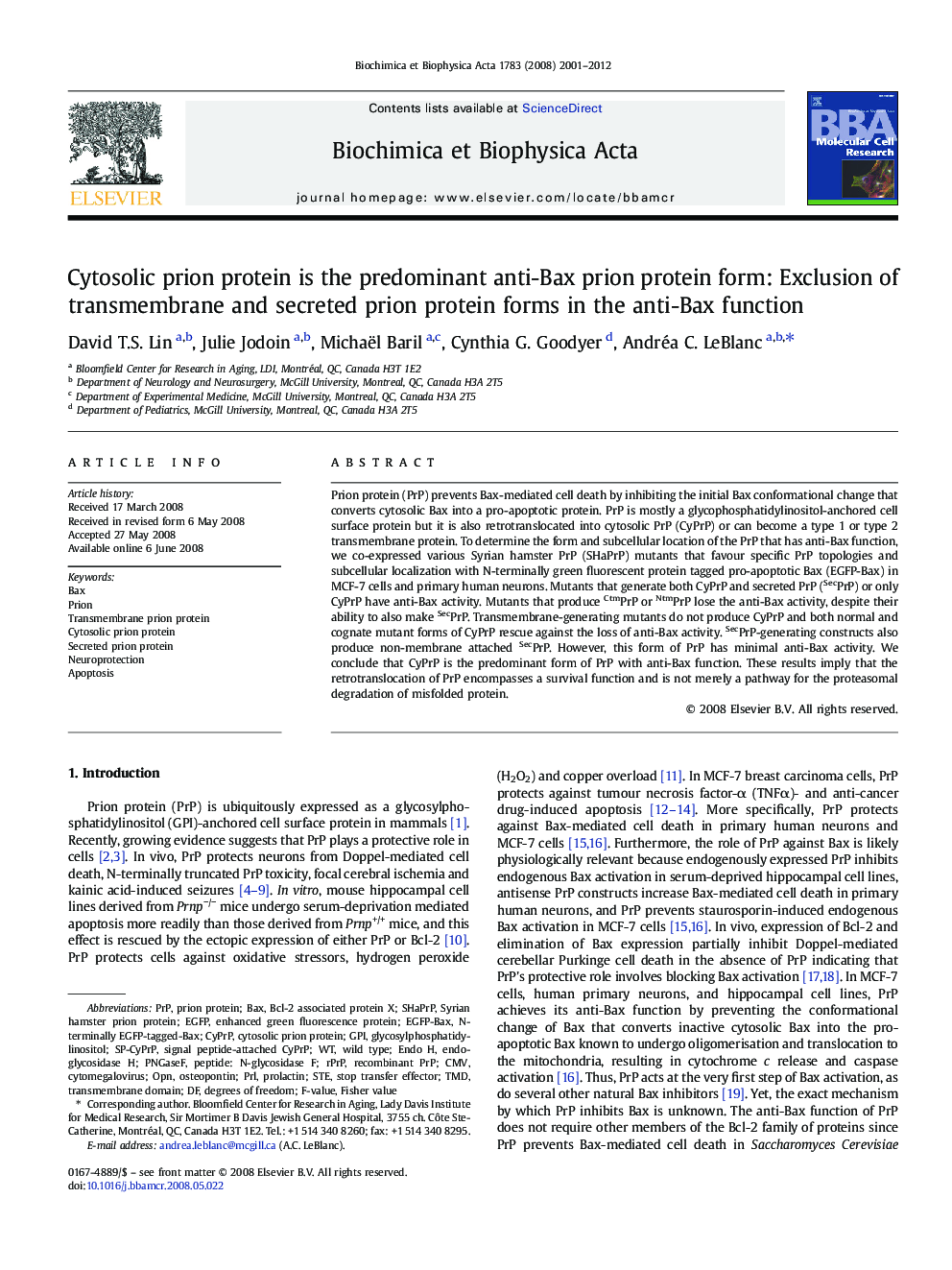| Article ID | Journal | Published Year | Pages | File Type |
|---|---|---|---|---|
| 10803100 | Biochimica et Biophysica Acta (BBA) - Molecular Cell Research | 2012 | 12 Pages |
Abstract
Prion protein (PrP) prevents Bax-mediated cell death by inhibiting the initial Bax conformational change that converts cytosolic Bax into a pro-apoptotic protein. PrP is mostly a glycophosphatidylinositol-anchored cell surface protein but it is also retrotranslocated into cytosolic PrP (CyPrP) or can become a type 1 or type 2 transmembrane protein. To determine the form and subcellular location of the PrP that has anti-Bax function, we co-expressed various Syrian hamster PrP (SHaPrP) mutants that favour specific PrP topologies and subcellular localization with N-terminally green fluorescent protein tagged pro-apoptotic Bax (EGFP-Bax) in MCF-7 cells and primary human neurons. Mutants that generate both CyPrP and secreted PrP (SecPrP) or only CyPrP have anti-Bax activity. Mutants that produce CtmPrP or NtmPrP lose the anti-Bax activity, despite their ability to also make SecPrP. Transmembrane-generating mutants do not produce CyPrP and both normal and cognate mutant forms of CyPrP rescue against the loss of anti-Bax activity. SecPrP-generating constructs also produce non-membrane attached SecPrP. However, this form of PrP has minimal anti-Bax activity. We conclude that CyPrP is the predominant form of PrP with anti-Bax function. These results imply that the retrotranslocation of PrP encompasses a survival function and is not merely a pathway for the proteasomal degradation of misfolded protein.
Keywords
PNGaseFOPNBcl-2 associated protein XTMDF-valueGPiPrPPRLpeptide: N-glycosidase FrPrPSTErecombinant PrPeGFPOsteopontinEndo Hendoglycosidase HBaxApoptosistransmembrane domaindegrees of freedomcytomegalovirusCMVNeuroprotectionwild typeenhanced green fluorescence proteinPrion proteinProlactinPrionglycosylphosphatidylinositol
Related Topics
Life Sciences
Biochemistry, Genetics and Molecular Biology
Biochemistry
Authors
David T.S. Lin, Julie Jodoin, Michaël Baril, Cynthia G. Goodyer, Andréa C. LeBlanc,
